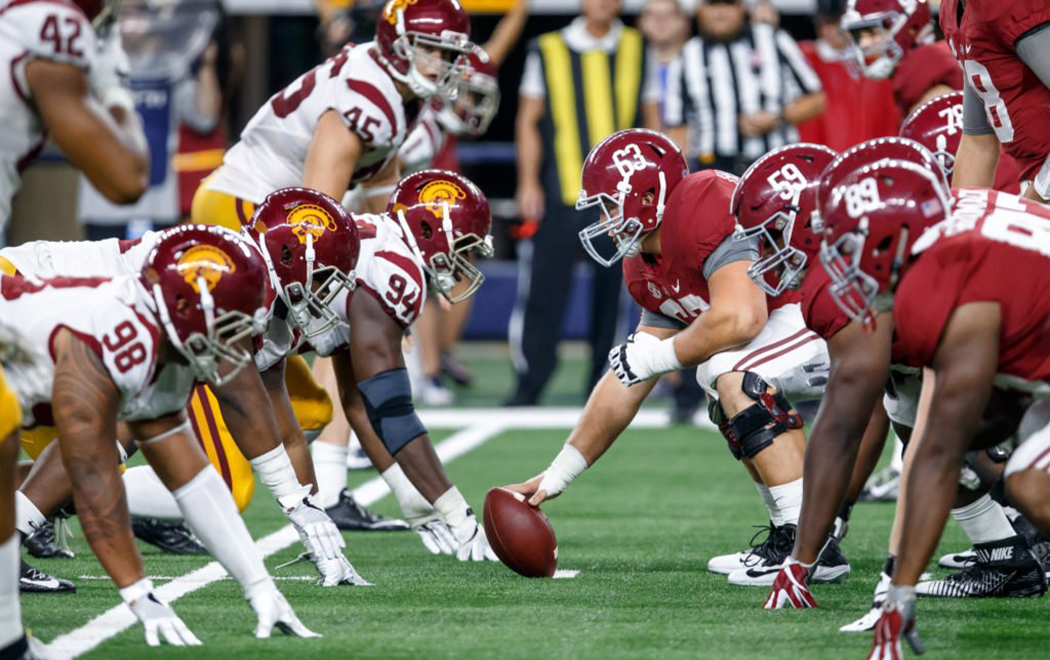The NCAAs Top Doctor Plans For The Return Of College Sports

A regular fall college football season is possible, despite the ongoing pandemic, said Dr. Brian Hainline, Chief Medical Officer of the National Collegiate Athletic Association. While stressing the fluidity of the situation, the NCAA’s top doctor said the decision would be made “region by region, school by school,” as “some regions are doing better than others” with regard to COVID-19.
College sports is big business: in the 2016-2017 fiscal year, the NCAA took in more than $1 billion in revenue, 80% of it from the television and marketing rights for the Division I men’s tournament.
“I’m here in New York City, a city that more than any other was decimated by the virus,” Hainline said in an exclusive phone interview today. However, with signs of improvement, including a decrease in new infection rates and a stabilized health care structure, the outlook for collegiate sports has improved.
“Two or three weeks ago, it would have been unimaginable to consider sports,” he added.
The NCAA, which regulates student athletes from nearly 1,300 North American institutions and conferences, today released guidelines, entitled Core Principles of Resocialization of Collegiate Sport, which “are offered as a premise for resuming practice and competition at the collegiate level.”
Hainline – appointed the organization’s first CMO in 2013 - said that as the NCAA was developing its guidelines the White House released Guidelines - Opening Up America Again, a three-phased approach to help steer state and local officials in reopening their economies. The NCAA decided to “merge” its recommendations with the national guidelines, which include satisfying "gating criteria" that cover hospital preparedness and a minimum period during which COVID-19 cases decrease.
The fate of the fall college football season has been a focal point since the NCAA cancelled the Division I men’s and women’s 2020 basketball tournaments in March together with all remaining winter and spring NCAA championships, due to the COVID-19 public health threat.
Universities are currently deciding whether they can open up their campuses this fall, and how that unfolds will obviously inform students’ ability to participate in a regular fall football season starting in late August or early September. Decisions about conducting face-to-face classes at the start of the academic year are likely to be made in the next few weeks and months.
“There will be a time that decisions have to be made” about participating in a fall season, said Hainline. “We have some wiggle room, until the middle of June.”
A number of “what if” scenarios remain in play. A football season that kicks off later, televised games without fans in attendance and changing the dates of the fall championships are all possible, said Hainline. Did the National Football League’s recent decision to go forward with the 2020 league draft inform Hainline’s plans?
“In terms of sharing best practices of crowd control” the NFL and the NCAA are aligned, he said. However, “that’s where the similarities break down … The NFL is a top-down, for-profit organization with 32 teams, we’re a bottom-up organization with 1,100 schools.”
The lack of televised sports, especially during a national crisis, has taken a toll on eager spectators. While the safety of college athletes remains a priority, the weight sports carries was also a consideration, especially against a backdrop of state lockdowns and general anxiety.
“Sports are a very important cultural aspect of society,” said Hainline. The absence of spectator or televised sports “magnifies the loss of hope,” he said. “Bringing back sport is a tangible and physical manifestation of hope.”
Governor DeWine encourages Ohioans to Light Ohio Blue to honor law enforcement members
Governor Mike DeWine is asking Ohioans to show their support for the state’s law enforcement by participating in the “Light Ohio Blue” campaign.
International Museum Day - May 18th
HOF Productions will present great moments of the Pro Football Hall of Fame.

